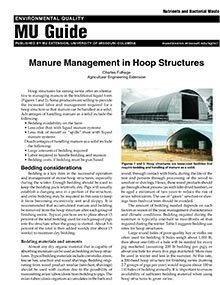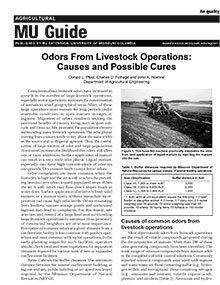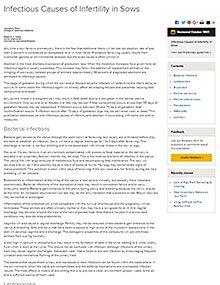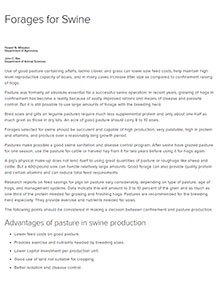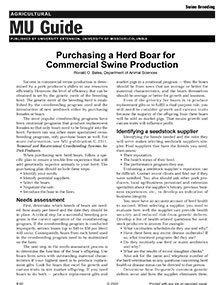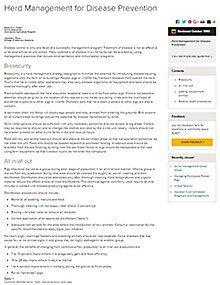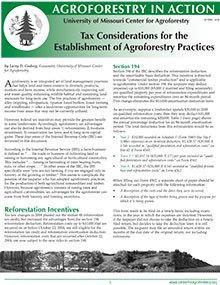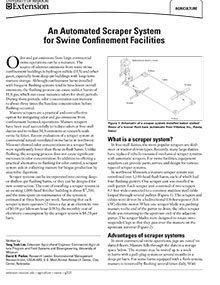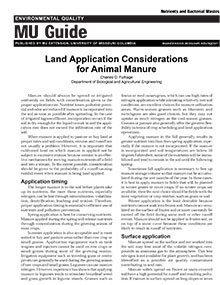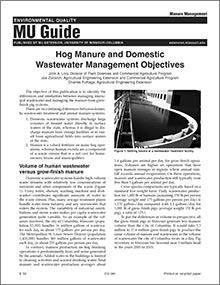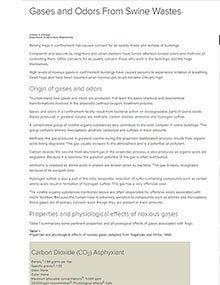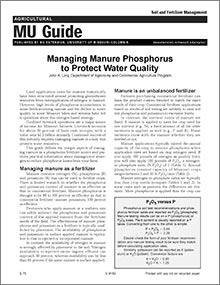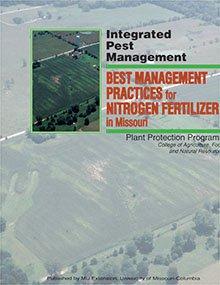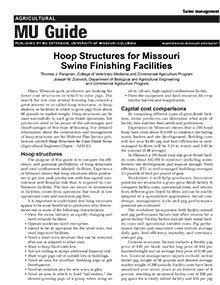The following publications cover topics related to Swine Extension. For a complete list of MU Extension publications, visit the main Publications page.
Manure Management in Hoop Structures
Reviewed
Hoop structures for raising swine offer an alternative to managing manure in the traditional liquid form. Some producers are willing to provide the increased labor and management required for a hoop structure so that manure can be handled as a solid. Advantages of handling manure as a solid include the following:
Agricultural Phosphorus and Water Quality
Reviewed
This guide demonstrates the complexities of reducing losses of phosphorus from agricultural land and the range of options available to help reach water quality goals.

Managing Nitrogen to Protect Water Quality
Reviewed
How is nitrogen lost from the soil?Nitrogen is primarily lost by three pathways:
Forages for Swine
Reviewed
It is still possible to use large amounts of forage with the breeding herd. Visit our site to learn about using Forages for Swine.
Tax Considerations for the Establishment of Agroforestry Practices
Reviewed
Learn tax advantages for planting trees for timber, using personal property for business use, investing in conservation and reporting timber sales as capital gains.
Hog Manure and Domestic Wastewater Management Objectives
Reviewed
The objective of this publication is to identify the differences and similarities between managing municipal wastewater and managing the manure from grow-finish pig systems.
Gases and Odors From Swine Wastes
Reviewed
Raising hogs in confinement has caused concern for air quality inside and outside of buildings.
Managing Manure Phosphorus to Protect Water Quality
Reviewed
This guide defines the unique aspects of managing manure as a phosphorus fertilizer source and provides practical information about management strategies to reduce phosphorus losses from your farm.
Best Management Practices for Nitrogen Fertilizer in Missouri
Reviewed
Successful nitrogen management delivers enough nitrogen to crops to optimize yield and profitability while minimizing losses to water and air. Learn the best management practices from sound economic, production and environmental viewpoints in this guide.
